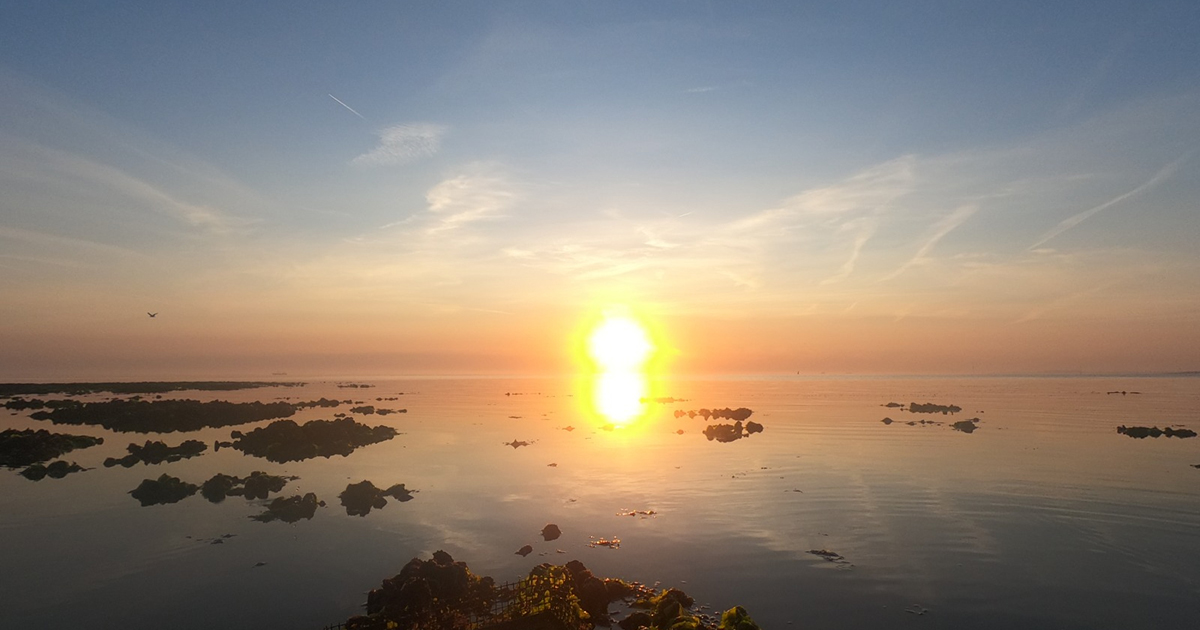A biodegradable stocking, containing a core of coconut rope and empty cockle shells, appears to be a good recipe for catching mussel larvae and letting them grow into small mussels. The Ph.D.-thesis of Lisanne van den Bogaart, a marine biologist working at NIOZ in Yerseke, shows that those stuffed stockings catch at least as many young mussels as the already ‘traditional’ Mussel Seed Capture Installations, or MZIs, of farmers. "If you place these stockings with mussel seed on the bottom, the animals often survive even better than if you 'seed' them individually on the bottom of the Oosterschelde, for example," Van den Bogaart says.
Considerable losses
With the traditional method of seeding mussels, losses of up to 70 or 80 percent occur. "Especially crabs and starfish feast on the small mussels," Van den Bogaart knows. "That's why in my research I looked for ways to make those little shellfish survive better."
The stocking-with-rope-and-shells certainly proved no panacea in this regard, the researcher observed. "The survival of the mussel seed on the outside of the structure was probably higher, because the shells benefited from the 'strength of large numbers'. Also, the mussels on the stocking were already larger than on traditional installations, so they were less likely to fall prey to crabs and starfish. A third advantage was that the mussels on the stocking did not wash away as easily as loose shells 'seeded' from traditional installations."
In trials in the Wadden Sea, Van den Bogaart and colleagues saw that there were sometimes large losses even when using these artificial structures. "We think that was because in heavy weather, the small shells were crushed by the empty cockle shells, which we had put in as protection."
Aquaculture
Van den Bogaart's research with the "mussel stockings" was funded in part from an NWO aquaculture project. "We wanted to see if we could find better ways to capture mussel larvae and grow them into consumer mussels. We partially succeeded," the researcher states. "We have designed a system that allows us to both capture larvae and grow out the mussels."
Still, mussel farmers will not start using this system just yet. The benefits are not yet great enough to change their entire business operations based on traditional MZIs. Moreover, the shellfish on a full sock also quickly run into physical limits, van den Bogaart observed. "They would only be able to grow further when you cut open the sock and give the mussel more space, but that is again quite labor intensive."
Also for nature restoration
Van den Bogaart emphasizes that this research is a valuable intermediate step and certainly not an end station. "We have learned a lot about the requirements that mussels make of their environment and about the advantages and disadvantages of different substrates. Moreover, this knowledge is not only applicable in cultivation, but also in the restoration of natural mussel reefs. Those reefs are important as habitat for many different plants and animals, they hold sediment under rising sea levels, and they break the force of currents and waves, preventing erosion. But wind, waves and currents often make it difficult for young mussels to form new reefs. So, to restore lost shell banks to nature on a large scale, this kind of artificial structures may be helpful."



